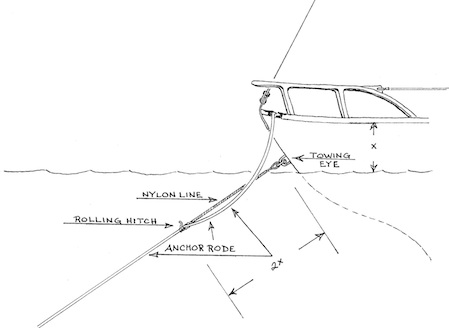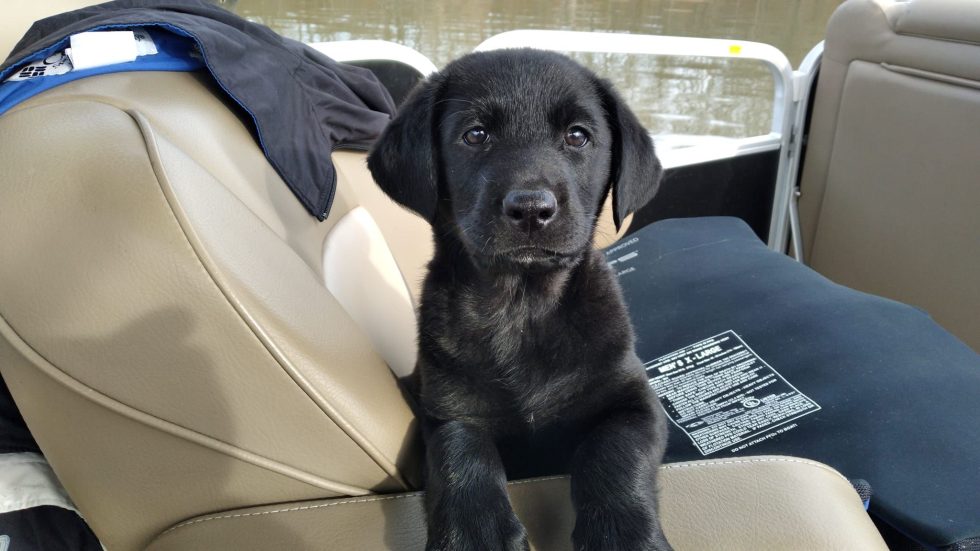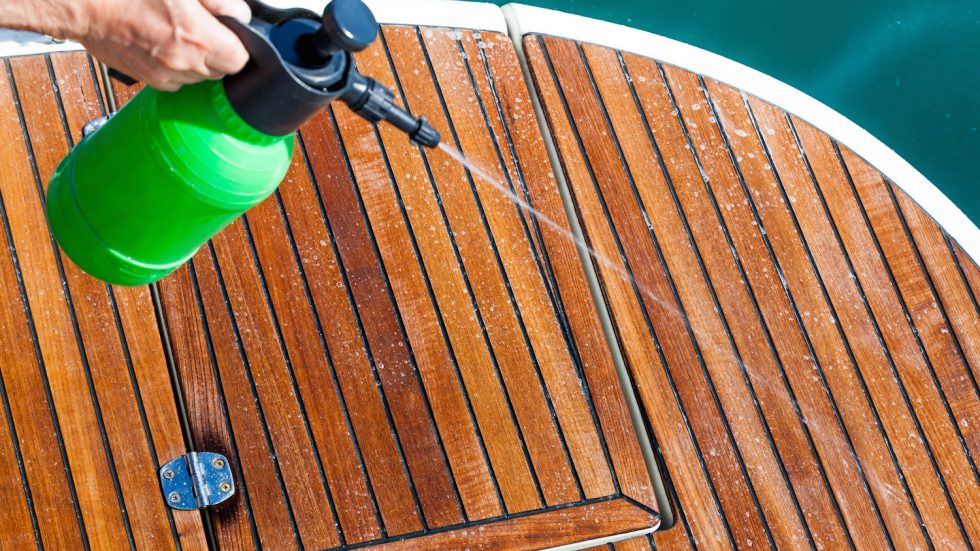The most common anchoring error is just that. Essentially, the anchors and rodes formed massive piles on the bottom. When the skippers backed off, all they did was stretch the rodes without setting the hooks.
The correct procedure is to drop the hook and immediately back off while feeding out a pre-determined length of rode; stop and slowly come astern until the anchor takes, if necessary deploying more line until the hook sets.
That’s it! There are no deep, dark secrets or “aha” techniques. Follow that procedure, and the odds are in your favor that you’ll be securely anchored.
Well, you should be. Like everything else in this uncertain world, nothing is guaranteed. If it doesn’t work and you know you did everything right, just pin the blame elsewhere (crew always works for me) and try again.
Using a Sentinel
The amount of rode deployed is the “scope,” and the more the better. Scope is determined by the depth of water measured from the vessel’s bow chock. A boat anchored in 15 feet of water with a bow chock 5 feet above the water would have to let out 60 feet of rode to achieve a scope of three to one: (15 + 5) x 3 = 60. Ideally, 7:1 should be the drag-eliminating minimum, but in the real world of jammed anchorages, excessive rode can create an embarrassing intimacy with your neighbor.
However, there are techniques that can increase holding without the necessity of deploying excessive rode. An all-rope rode, for instance, is insufficient; at least 6 feet of chain between the rope rode and the anchor increases holding. The chain allows more rode to lie on the bottom before beginning its upward arc.
This curve of the rode from the anchor to the boat, called the “catenary,” is important because the greater the arc, the more line there is lying along the bottom. This increases the horizontal pull on the anchor and ensures a better set. The more vertical the pull on the anchor, the more possibility of dragging.
That horizontal pull can be increased without laying out more line by deploying a “sentinel,” a weight that is bent-to and slid down the rode on its own line until it rests on the bottom. Your best options are another, lighter anchor or a weight made specifically for the task.
Boats equipped with towing eyes or well-backed stem fittings can have a line — as long as practical — bent to the fitting. After the anchor is set, that line is then bent (a rolling hitch is ideal) to the rode near the stem. More rode is then deployed until the strain of the anchor is transferred to the new line (see illustration).

The catenary is increased without deploying excessive rode; another plus is that the possibility of chafe at the bow chock is eliminated.
Choosing an Anchor
The anchors that work best in bottoms — exclusive of rock, shale and coral — are based on the traditional plow (e.g. CQR, Bruce) and fluke (e.g. Danforth) types. I’ve had best results when the anchors were somewhat heavier than the recommended weight for the size of boat.
All anchors come in “lightweight” versions, which are convenient, easy to stow and, of course, light — and it is said their holding has been proven equal to the heavier artillery. But when “the spray hits the fan,” such as when you need to anchor in an unexpected squall, nasty chop or wind, the lightweight anchor will not set as quickly as the traditional hook.
Add a lee shore to the mix and that extra drag can be, well, a drag. Sure, stow that lightweight anchor, but use it as your backup or lunchtime hook to be deployed when conditions are benign.
No matter how secure my set is, I never trust that the boat will not move until I’m tied up in my own slip. I periodically eyeball the rode and take bearings on set objects. If the anchor does drag, deploying more rode will often allow it to reset. If not, start the engine, lift the hook, and repeat the whole procedure while the choice still remains yours.
Author: Stu Reininger is a regular contributor to HeartLand Boating




